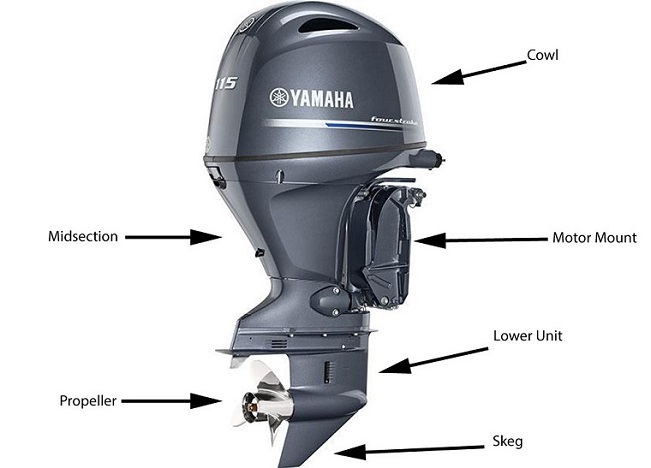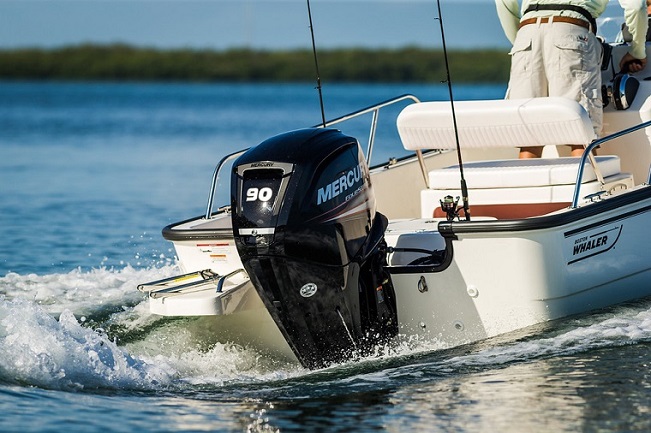The first sailing boats in the world were the ones built by ancient Egyptians 4000 BC. These reed boats had a mast and sails and were used in the Nile. 2500 BC ancient Egyptians started building wooden boats which were able to withstand sailing across oceans. Boats at that time were used mainly for transporting goods and fishing. Boats drove the economic force of most countries and were the main type of transport when going overseas. Although it all changed in the second half the 20th centuries, boats are still massively used for a range of purposes – from transporting large shipments to cruises and more.
How Does a Boat Engine Work?
No matter how big or small a boat may be, they all use some type of engine. Boat engines work much like car engines. There are piston rods that turn a crankshaft which converts the reciprocating motion of the piston into a rotary motion. Every motor control boat relies on the burning and expansion of fuel gasses which is what makes the pistons move in the first place.
Anatomy of a Boat Engine

Powerhead
The topmost section of an outboard motor control unit is called a powerhead since it contains components that have direct involvement in the combustion process. These are the crankshaft, cylinder heads, and engine block. The engine block is the area where all the moving components are located. This includes the piston rods, crankshaft and pistons. You will also find the cylinders in here close to the pistons.
The crankshaft is what the pistons attach to and make it spin around to generate power. As the crankshaft spins around, the piston rode move up and down and thus move the pistons located inside the cylinders. The cylinder heads are found above the cylinders. This is the part of the engine block where the spark plugs, cams, valves, and camshaft are located.
The Middle
The area between the powerhead and lower unit area is called the middle of the motor control boat. This is a metal casing made to connect the upper area to the lower unit. It acts as a channel for the components in the lower and upper units. The middle area usually includes a bracket that attaches the motor to the boat’s transom and it allows the engine to turn in different directions.
Lower Unit
The lower unit contains the following components: bearings, gear set, driveshaft, clutch dog, seals, shims, and shift mechanisms. All these small components help with the steering of the boat and with the inner workings of the motor.
What Should I Look for When Buying an Outboard Motor?

Two Strokes vs. Four Strokes
Most boat engines are divided into two categories: four and two-stroke. The two-stroke boat engine controls of today are direct injection motors which are more efficient than their predecessors. This is because an exact amount of fuel is injected into the engine which eliminates the need for a carburettor. These motors are used for smaller boats.
Four-stroke boat engines are made for leisure boaters. They are the number one choice for boats that need to make big strides both literally and figuratively. While these engines do use direct injection, this type of system is more similar to the automotive industry than the one used in two-stroke boat engines.
Start
There are two types of start on an outboard boat engine electric and manual. Electric start provides you with a much quicker and easier start as it only requires the push of a button. Manual start, as the name suggests, requires you to start the engine manually which is not as convenient of a feature.
Shaft Length
The shaft length of a motor is determined by the height of the transom. This is what the motor attaches to and it needs to be correct as the motor won’t propel the boat properly. The transom height is determined by measuring from the top-centre section where you would attach the outboard motor to the bottom centre of the hull.
Tiller vs. Steering Wheel
When it comes to steering, you can choose between a tiller handle or a steering wheel. If you want something that will enhance the steering control on your motor, go with a tiller handle. Even if you are used to using a steering wheel remember that a tiller handle will always allow for better control.
Horse Power
When choosing the right outboard motor for your boat, horsepower is one of the first things to consider. This is what determines how powerful the motor will be. Obviously, the bigger the horsepower is, the more powerful the motor will be but that isn’t always the best option.
























